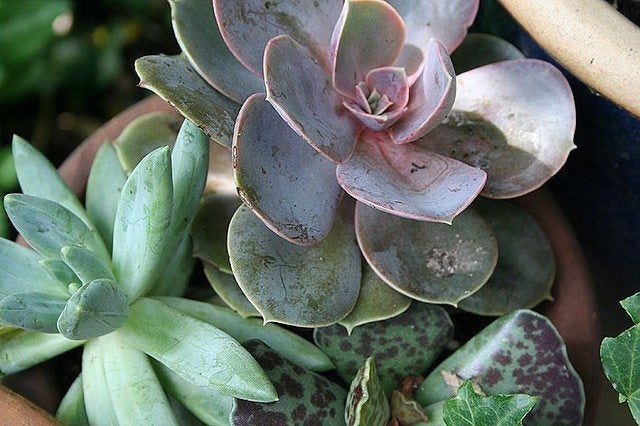Fun Plants To Grow As Houseplants


Sometimes indoor plants are out of the ordinary or distinctly exotic. Some are more difficult to grow than others, especially your more common plants, but not always. Sometimes indoor plants just have very specific needs but they tend to be quite easy to care for.
Fun Cacti to Grow Indoors
Cacti are very popular houseplants because you can neglect them for a period of time and they will remain quite alive, if not really flourishing. They belong to a group known as succulents, which have fleshy stems or stems and leaves adapted for coping with water shortage. You can ignore these plants for a little while and not really harm them. True cacti don't normally have leaves, but swollen green stems instead. There are two types of cacti: forest cacti and desert cacti. Forest cacti include both the Easter and Christmas cactus. These have flattened stems that look like leaves but aren't. The desert cacti are the ones that instantly come to most people's minds when you think of cacti. They take on many different shapes but generally have round, cushion-like areolas over their surface, from which grow spines or bristles and flowers and new shoots. All cacti are well adapted to drought. This does not, however, mean they will give their best in drought conditions. They still need to be watered, and it needs to be done carefully to avoid rotting of the stems (not too much water), but it does need to be regular throughout the growing season (not too little water). You will want to allow the top few centimeters (first inch or two) of compost to dry out between each watering, and ensure the compost is sandy so it drains freely. At the end of the summer, gradually reduce the amount of watering, and from autumn to spring, give only enough water to prevent the plants from shriveling. Desert cacti need a sunny position in your home. Cacti are the few indoor plants that need bright, direct sunlight. Regular room temperatures are fine, however. They don't require a lot of heat as would be believed. Some cacti don't flower until they are large, mature plants. Also, flowers are very unlikely indoors. Others will flower regularly indoors, given the right treatment. So long as you give the cactus adequate water and sunlight in the summer, plus a cool, dry winter rest, it should flower for you. Mammillarias, lobivia, rebutia, notocactus, and parodia are somewhat simple to obtain blooms. Don't be fooled by the young plants you see in the stores with brightly colored flowers. These are almost always artificially stuck into the plant with a pin. Further, the pins damage the plants and cause them to rot.
Growing Food Indoors
A small number of food crops can be grown indoors as well. A conservatory is perfect for this, but you can also grow them on the windowsill. These plants generally need good light, ample watering, and regular liquid feeding. Use containers that are as large as practical -- you don't want them falling off the windowsill and you don't want to crowd the roots either. For the kitchen windowsill, herbs are a must. Remember, though that not all types will grow well in pots. Those that definitely will grow well are:
Keep growing tips pinched out where necessary. This encourages bushiness. Also, remove flower buds as soon as they are seen. It is a good idea to have several pots of each herb so that as the ones indoors go past their best indoors, they can be planted outside. During the time you put them outside, sink the pots in the soil to make sure they don't go short of water. Be sure to choose a warm, sunny, protected place to position them. In winter you will find that supplementary lighting is very useful in helping to continue the crop. Several varieties of tomato have been bred with small spaces in mind. These tomato plants make good plants for a sunny windowsill, too. You will need to pollinate the plants yourself using a soft brush. Be sure the plants never go short of water. French beans will also give a crop on fairly neat, compact plants. The globe-rooted varieties of carrots are grown very much like tomatoes. 'Redskin' is bred specially with pot growing in mind and is perfect for your little kitchen garden. The hotter cayenne peppers make very attractive pot plants with their green and red fruits. There are several different types of lettuce that are both attractive and useful, and growing lettuce indoors isn't too hard. The variety 'Red Salad Bowl' has bronzy, oak-leaf shaped foliage while 'Lollo Rosso' has finely curled and crumpled leaf edges, making a frilly rosette in a pot. Both are quite pretty. So you see, there are some fun plants to have in your home that don't take a whole lot of effort to take care of. You can have your own little herb garden on your kitchen windowsill or you can have your own little desert oasis in the living room. Whatever you choose to do, you should enjoy your indoor gardening with these choices.
Sign up for the Gardening Know How newsletter today and receive a free copy of our e-book "How to Grow Delicious Tomatoes".

Heather Rhoades founded Gardening Know How in 2007. She holds degrees from Cleveland State University and Northern Kentucky University. She is an avid gardener with a passion for community, and is a recipient of the Master Gardeners of Ohio Lifetime Achievement Award.